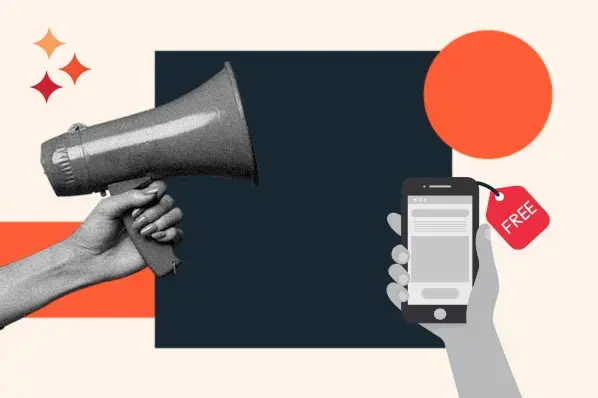How to Prepare for Black Friday : The Ultimate Guide for Brands
Black Friday is no longer a one-day event. It has now transformed into an extended sales extravaganza that starts weeks before and stretches through Cyber Monday. Knowing how to prepare for Black Friday is essential for brands, as it’s one of the most lucrative—and most chaotic—times of the year. According to Adobe Analytics, Black Friday […]

According to Adobe Analytics, Black Friday 2022 saw consumers spend $9.12 billion online., a number that’s expected to grow in 2024 as shopping trends shift online. For brands looking to capture their slice of this massive pie, preparation is key. But where do you start?
Many businesses need to pay more attention to the importance of proper planning and execution. They either scramble at the last minute or focus too narrowly on offering discounts without preparing for the influx of traffic, inventory challenges, and customer service demands. The result? Missed opportunities, frustrated customers, and a brand reputation that can take a serious hit.
This comprehensive guide explains why brands need to prepare for Black Friday, what key areas to focus on, and how to execute a winning strategy. We’ll cover everything from inventory management and marketing to customer service and website optimisation.
Why Preparing for Black Friday is Non-Negotiable
Black Friday is the Super Bowl of retail. Whether you’re a small e-commerce store or a large enterprise, failing to properly prepare can have lasting consequences. Let’s dive into the reasons why preparation is essential:
1. Massive Revenue Potential
In 2022, Shopify merchants alone made over $7.5 billion in sales between Black Friday and Cyber Monday, with the average cart size sitting at $102.10. Black Friday is your chance to make a significant portion of your annual revenue in just a few days.
But this happens only if you’re ready to handle the rush. Whether you’re selling a niche product or catering to the masses, this weekend could account for up to 20-30% of your yearly sales.
2. Sky-High Customer Expectations
Today’s consumers are looking for great deals. They demand a seamless shopping experience. From a smooth website to fast customer service, shoppers expect brands to have it all figured out. If your site crashes or you’re out of stock on popular items, customers will quickly lose patience and turn to competitors.
Worse still, a bad Black Friday experience can damage your brand’s reputation for months to come. 49% of consumers say they’ll abandon a brand after one bad experience, which means the stakes couldn’t be higher.
3. Fierce Competition
Black Friday is no longer just about offering the lowest price. Every brand, from e-commerce giants to local shops, is competing for attention. Consumers are bombarded with promotions, emails, and ads starting weeks in advance.
If you don’t stand out with the right offers, a user-friendly experience, and strategic marketing, you’ll get lost in the noise. It offers value and convenience that exceeds customer expectations.
4. Customer Acquisition and Long-Term Loyalty
Beyond immediate revenue, Black Friday presents a unique opportunity to acquire new customers. A well-executed Black Friday strategy can bring in first-time buyers who, if treated right, can turn into loyal customers.
By offering a great shopping experience, fast delivery, and excellent customer service, brands can make a lasting impression that keeps customers coming back even after the holiday season.
What Brands Need to Focus On for Black Friday Success
Now that we’ve established why preparing for Black Friday is crucial, let’s explore what you need to focus on. Successful brands don’t just throw discounts around—they strategically plan every aspect of their operations, marketing, and customer experience. The following are the critical areas that require your attention.
1. Inventory Management: Stocking Smartly
Inventory management can make or break your Black Friday success. Imagine crafting a killer marketing campaign, only to run out of stock on your top-selling products halfway through the day. Not only do you lose potential sales, but you also risk frustrating customers who come to your store for a specific item.
Here’s how to approach inventory management strategically:
- Use Historical Data: Analyse your sales data from previous Black Fridays and the holiday season. Which products sold the most? Which items were in high demand but ran out too early? Use this data to forecast what you’ll need.
- Coordinate with Suppliers: Ensure your suppliers are prepared for your Black Friday needs. If you need a higher volume of stock, communicate with them well in advance to avoid supply chain issues.
- Backup Stock: For your best-sellers, consider having an alternative product ready to promote in case you run out. This ensures you always have something to offer even if your top product sells out.
- Clearance Opportunities: Black Friday is also a good time to clear out older inventory. Consider offering deep discounts on older stock to make room for newer items while still driving revenue.
2. Website Optimisation: Preparing for High Traffic
Most Black Friday sales are made on mobile devices, and with mobile shopping trends continuing to rise, ensuring your website can handle both desktop and mobile traffic is non-negotiable. Website crashes during Black Friday are not uncommon, but they’re deadly. Customers who can’t access your site will quickly move on to your competitors. Here’s how to ensure your website is up to the task:
- Stress Test Your Site: Use tools like Google Lighthouse or GTmetrix to test your website’s performance under heavy load. This will help you identify weak points and optimise accordingly.
- Optimise for Speed: A slow website can be as detrimental as a crashed one. Studies show that a one-second delay in page load time can reduce conversions by 7%. Compress images, minify your code, and use a content delivery network (CDN) to ensure fast loading times.
- Mobile Optimisation: With so many users shopping on mobile, your site must be responsive. Test your site’s mobile experience thoroughly—ensure that it’s easy to navigate, loads quickly and that the checkout process is smooth.
- Streamline Checkout: Cart abandonment is a huge issue during Black Friday. A complicated checkout process can lead to a spike in abandoned carts. Simplify your checkout process by reducing the number of form fields, offering guest checkout options, and integrating multiple payment gateways like PayPal, Apple Pay, and Google Wallet.
3. Marketing Strategy: Standing Out in a Crowded Marketplace
During Black Friday, consumers are bombarded with promotions from every angle. Your marketing strategy needs to be sharp, targeted, and engaging to capture attention. Here’s how to cut through the noise:
- Email Marketing: Start your email campaigns early to build anticipation. Consider sending out teasers or “early access” deals to your most loyal customers. On the event day, send multiple emails with countdowns, exclusive offers, and urgent calls to action. Personalisation is key—segment your audience and tailor your messages based on their shopping behaviour.
A study by Campaign Monitor found that personalised emails can increase transaction rates by 6x, so don’t hesitate to use customer data to craft unique offers.
- Social Media Promotions: Platforms like Instagram, Facebook, and TikTok can be game changers during Black Friday. Create engaging content that showcases your deals, such as behind-the-scenes videos, user-generated content, and influencer collaborations. Encourage your followers to share posts for a chance to win exclusive Black Friday deals.
- Retargeting Ads: Use retargeting ads to bring back customers who visited your site but didn’t make a purchase. These ads are particularly effective during Black Friday when consumers are shopping around and may need a reminder to complete their purchase.
- Influencer Partnerships: Leverage influencer marketing to get your brand in front of larger, engaged audiences. Choose influencers who align with your brand values and whose followers match your target demographic.
4. Customer Service: Meeting Expectations in Real Time
Customer service during Black Friday is a different beast. Expect a surge in inquiries, ranging from product questions to shipping concerns. Providing fast, efficient customer support will not only improve the shopping experience but can also prevent negative reviews and lost sales. Here’s how to get it right:
- Live Chat Support: Consider adding a live chat feature to your website, especially during peak hours. Live chat can help resolve questions quickly, reducing the likelihood of a customer abandoning their cart.
- Social Media Response: Many customers will turn to your social media platforms for quick answers. Make sure your social media team is prepared to respond quickly and efficiently to customer inquiries. Facebook Messenger and Twitter are particularly popular platforms for customer service interactions during sales events.
- Customer Service Training: Train your customer service team in advance. Ensure they are well-versed in your Black Friday policies, including return policies, shipping times, and any special offers. A well-prepared team will reduce friction during the busy sales period.
5. Shipping & Fulfillment: Speed is Everything
One of the main pain points for customers during Black Friday is slow shipping. E-commerce giants like Amazon have conditioned consumers to expect fast, affordable, or even free shipping. To meet these expectations, your fulfilment strategy needs to be airtight:
- Offer Fast Shipping: Where possible, offer expedited shipping options. If free shipping isn’t viable for your business, consider offering free shipping for orders over a certain amount to encourage larger purchases.
- Communicate Shipping Times: Be transparent about shipping times, especially if you expect delays due to the holiday rush. Proactively communicating these details can prevent a lot of customer frustration.
How to Prepare for Black Friday: Step-by-Step Action Plan
Here’s a step-by-step guide to preparing for Black Friday, ensuring you have all the pieces in place for a smooth, successful event.
Step 1: Start Planning Early
The earlier you start, the better. Many successful brands begin planning for Black Friday as early as July or August. The first step is to map out your goals. Are you looking to boost revenue, acquire new customers, or offload excess inventory? Your goals will inform your overall strategy.
Key Actions:
- Conduct a post-mortem on last year’s performance. What worked? What didn’t?
- Outline your key metrics for success: revenue goals, customer acquisition, average order value, etc.
- Create a timeline for each aspect of your Black Friday strategy, including inventory management, marketing, and customer service.
Step 2: Craft a Winning Offer
Black Friday shoppers are deal hunters, but it’s not just about slashing prices. You need to craft offers that not only attract customers but also align with your brand’s value and profitability. Whether it’s deep discounts, bundled deals, or exclusive product releases, your offer needs to stand out from the competition.
Key Actions:
- Review historical data to see which promotions resonated most with your customers.
- Test different types of offers: flat discounts, tiered discounts, or buy-one-get-one-free promotions.
- Be sure to account for your profit margins when offering discounts to avoid cutting too deep.
Step 3: Optimise Your Website for Performance and Conversion
As discussed earlier, your website’s performance during Black Friday is crucial. But beyond speed and stability, your website also needs to convert visitors into buyers. This means optimising your product pages, navigation, and checkout process.
Key Actions:
- Ensure your product pages are optimised with high-quality images, clear descriptions, and customer reviews.
- Test your site’s mobile-friendliness and fix any issues that could hinder the user experience.
- Implement a one-click checkout option, or simplify your existing checkout process to reduce cart abandonment.
Step 4: Launch a Multi-Channel Marketing Campaign
Your marketing campaign should be multi-channel, spanning email, social media, paid advertising, and influencers. The goal is to create a cohesive message across all platforms that builds anticipation and drives action.
Key Actions:
- Build a dedicated Black Friday landing page optimised for SEO. Use keywords like “Black Friday deals” and “best Black Friday sales” to capture organic traffic.
- Send teaser emails in the weeks before Black Friday, offering sneak peeks or early access to your most loyal customers.
- Run retargeting campaigns to re-engage customers who have shown interest but haven’t converted.
Step 5: Prepare for a Surge in Customer Service Inquiries
Customer service will play a pivotal role in your Black Friday success. Ensure your team is prepared for an influx of inquiries and has the tools they need to resolve issues quickly and efficiently.
Key Actions:
- Train your customer service team on your Black Friday policies, promotions, and common customer concerns.
- Implement AI-powered chatbots to handle basic inquiries and free up your team for more complex issues.
- Ensure your customer service platforms (live chat, social media, email) are fully staffed and ready for the surge.
Step 6: Test Everything
Before Black Friday hits, run through every element of your strategy to identify potential issues. From testing your website under heavy load to sending test emails, this step is crucial for catching problems before they become disasters.
Key Actions:
- Conduct a full stress test on your website, ensuring it can handle high traffic loads.
- Run A/B tests on your email subject lines, website banners, and landing pages to see what resonates best with your audience.
- Test your checkout process from start to finish, ensuring everything runs smoothly.
Step 7: Have a Post-Black Friday Follow-Up Strategy
Once Black Friday is over, your work isn’t done. You’ll want to follow up with your new customers to keep them engaged and turn them into repeat buyers.
Key Actions:
- Send thank-you emails to your customers, offering a discount on their next purchase or a preview of upcoming holiday sales.
- Use post-purchase surveys to gather feedback on the shopping experience and identify areas for improvement.
- Analyse your Black Friday data to see what worked and what didn’t, and use this information to refine your strategy for next year.
Conclusion:
Black Friday may be chaotic, but it’s also a prime opportunity for growth. Knowing how to prepare for Black Friday by focusing on the right elements—inventory, website optimisation, marketing, customer service, and fulfilment—can help brands turn this sales event from a stressful ordeal into a highly profitable venture.
The key is preparation. Starting early, testing everything, and making sure your customers have a seamless experience will set you apart from competitors and build long-term loyalty. Remember, Black Friday is more than just a day of deals—it’s a chance to make a lasting impression.
So, how will your brand tackle Black Friday this year? Will you be ready to handle the frenzy, or will you find yourself overwhelmed at the last minute? Start planning now, and you’ll be well on your way to turning this chaotic sales event into a goldmine.
What's Your Reaction?







































.png)












































